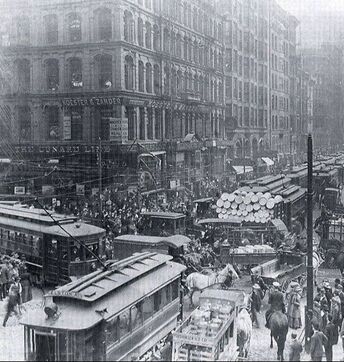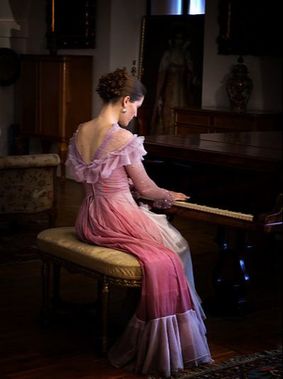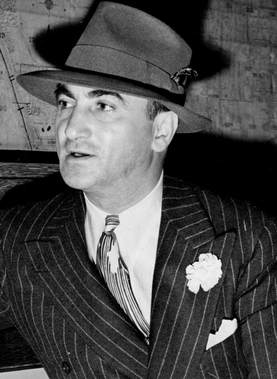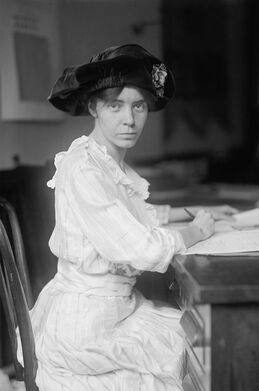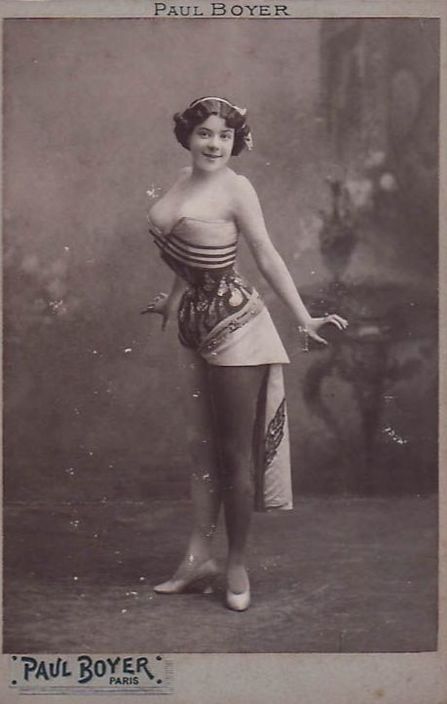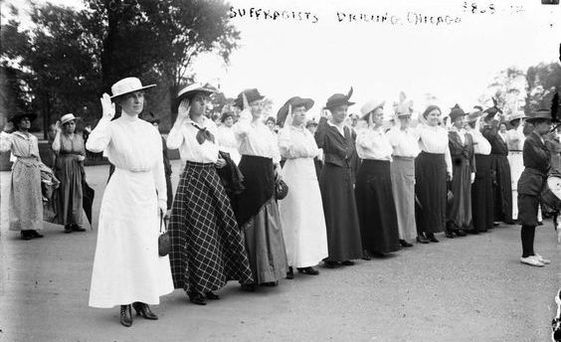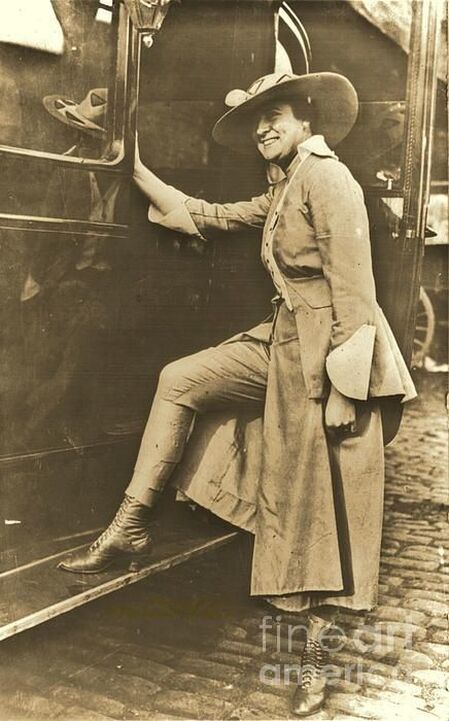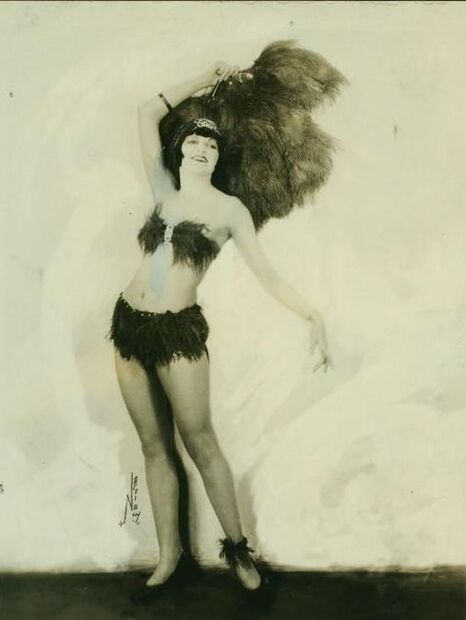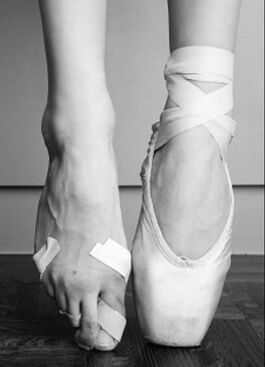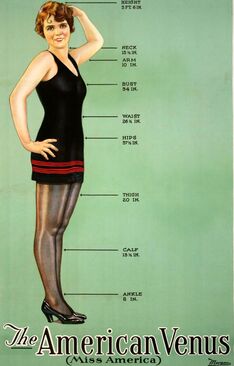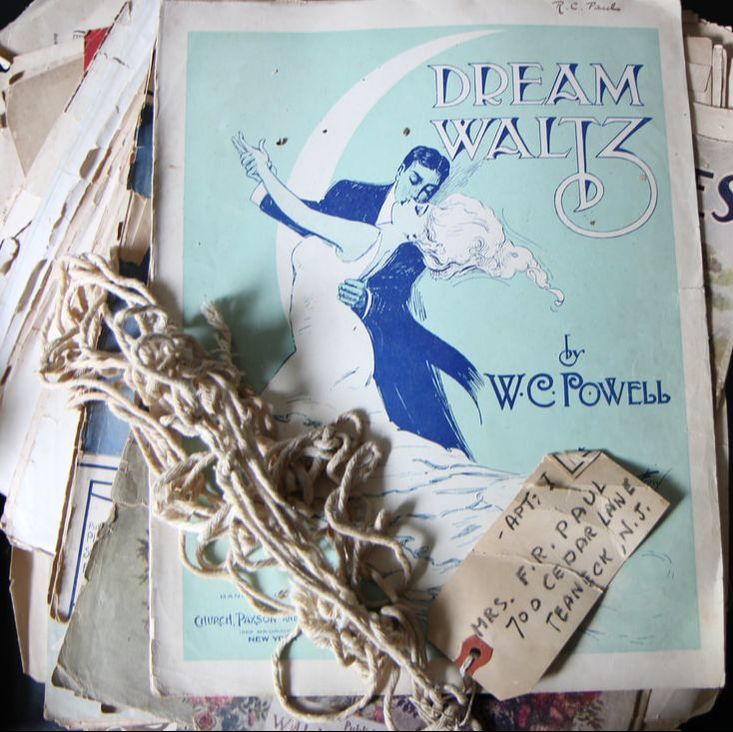what is this?
SING DANCE VOTE is the musical story of Adelaide Behr and Ruth Sofer, two young woman who embody the thousands of suffragettes and showgirls who represented contrasting versions of America's "New Woman" in the nineteen tens. As these extraordinary characters attempt to fight the norms of the generation that came before them, they experience what happens when friendship, duty, ambition, showbiz and the fight for womens' rights collide.
Meet THE Characters
Lillian RusselLFamous actress of stage and screen; benefactress of the chorus equity association |
Eddie Cantor"illustrated song" performer, comedian, dancer, singer, and actoR; AMERICA'S "APOSTLE OF PEP" |
Alice PaulAmerican socialist, suffragist,
|
Let's Be Friends!We're big nerds over here, and there's nothing we like more than talking with other nerds!
Whether your passion is theatre, writing, American history, women's rights or music, we've got some good conversation waiting over here for you. |
This is a photo of the Brittania Panopticon, the world's oldest surviving music hall. We aim to perform in this historic venue... someday...
|
Synopsis:
A Voice Unleashed
For Adelaide, the worldly fifteen-year-old daughter of a country doctor in fin de seicle Nebraska, success looks like being well-paid for her singing so that she never has to depend on a man for money. Soon enough, she comes to realize that pulling off this feat with any alacrity will involve becoming “well-loved” by those same men... but as a female artist living in the time of a nation-wide double standard, it seems inevitable to Adelaide that she must someday work in adult entertainment in order to make her fortune (morally questionable though that path may be).
|
|
Upon her arrival in Chicago in March of 1913 to study classical singing, Adelaide is converted to the school of feminist thought by her alluring accompanist Ruth, and finds that she must choose between her newfound beliefs in the rights of women, her grandfathers' desire that she become an opera star, and her stalwart conviction that vaudeville is still the quickest vehicle to convey her to money, power and ultimately, artistic freedom. Varied and sundry adventures ensue, and Adelaide's experiences include a short-lived burlesque career, a failed marriage, deep involvement with the Actors Equity Strike of August 1919, and finally, a return to singing.
|
|
Along the way Adelaide encounters such American luminaries as performer Eddie "Banjo Eyes" Cantor, socialist, suffragist, feminist and women's rights activist Alice Paul, and legendary Follies Dance Director Ned Wayburn.
After spending time confronting her demons, Adelaide lands a recording contract with Columbia Records. In November of 1928 Adelaide returns home to David City, Nebraska to share her records with her invalid grandfather George, who finally gives her his blessing to continue recording popular music. It is Election Day, and as she and her family finish listening to the recording, Adelaide opens the door and steps out to vote.
Creator's Statement
Several months ago, while moving into my forever home and unpacking countless boxes, I discovered a treasure trove: several linear feet of fin-de-siecle and early 20th c. sheet music. The music belonged to my great-grandmother, who emigrated from Belgium in 1909 to become the governess to Ellin MacKaye, Irving Berlin's second wife.
My interest was piqued. Here was the music that correlated with the Progressive Era, that rough-and-tumble time period when "America came of age".
Here, right in front of me, was the actual sheet music - much of it now lost to the world - that would have shaped the way the (mostly female) artists who played it thought about themselves and their lives.
With a swoop of clarity and historical curiosity I realized that the music I was holding painted the soundtrack not only to women’s home lives, but also to the ten years leading up to the passage of the 19th Amendment which - on August 26th, 1920 - granted women nationwide the right to vote.
My interest was piqued. Here was the music that correlated with the Progressive Era, that rough-and-tumble time period when "America came of age".
Here, right in front of me, was the actual sheet music - much of it now lost to the world - that would have shaped the way the (mostly female) artists who played it thought about themselves and their lives.
With a swoop of clarity and historical curiosity I realized that the music I was holding painted the soundtrack not only to women’s home lives, but also to the ten years leading up to the passage of the 19th Amendment which - on August 26th, 1920 - granted women nationwide the right to vote.
Digging deeper, I discovered that this time period was fraught with change not only for American politics, but for the very role women filled in society. Motor cars had just been invented, and women flocked to the cities by the hundreds of thousands to fill jobs as typists and manicurists. I learned that women comprised 86% of the typing force just a few years after a time when only respectable profession for a small-town girl would have been that of homemaker or teacher.
But what of the "New Woman" who wanted to become neither a typist nor a manicurist, neither a homemaker nor a teacher?
What of the woman who was a performer?
What of the woman who wanted to do something that would afford her MORE VOICE in the world?
But what of the "New Woman" who wanted to become neither a typist nor a manicurist, neither a homemaker nor a teacher?
What of the woman who was a performer?
What of the woman who wanted to do something that would afford her MORE VOICE in the world?
As an artist I have been greatly affected by the writings of Willa Cather; anecdotes about American showgirls, and by my own experiences as a young singer trying to “make it” in NYC. When I merged these influences with the historically relevant stories of Suffragettes fighting for women’s rights, the prevailing moral attitude of the day, and the surrounding historical context of a society inexorably marching toward the utter proliferation of consumable media, I started paying attention to how singers/performers and women active in politics have interacted with one another both then and now.
When I couched my findings within the narrative of someone who has, quite literally, been learning how to manipulate their voice since childhood, #SINGDANCEVOTE was born.
As an artist I have been greatly affected by the writings of Willa Cather; anecdotes about American showgirls, and by my own experiences as a young singer trying to “make it” in NYC. When I merged these influences with the historically relevant stories of Suffragettes fighting for women’s rights, the prevailing moral attitude of the day, and the surrounding historical context of a society inexorably marching toward the utter proliferation of consumable media, I started paying attention to how singers/performers and women active in politics have interacted with one another both then and now.
When I couched my findings within the narrative of someone who has, quite literally, been learning how to manipulate their voice since childhood, #SINGDANCEVOTE was born.
The Creator
Leighanne Saltsman is an artist, musician, history buff and 12th-generation Hudson Valley native. She holds a B.A. and a B.Mus from Oberlin. She is in a relationship with her sweetie, cultural history, iPhone camera and the Hudson river. Find more of her work at www.leighannesaltsman.com
Leighanne Saltsman is an artist, musician, history buff and 12th-generation Hudson Valley native. She holds a B.A. and a B.Mus from Oberlin. She is in a relationship with her sweetie, cultural history, iPhone camera and the Hudson river. Find more of her work at www.leighannesaltsman.com
Some of the Music
(aka What We're Listening To WHILE WE WRITE THIS THING!)
|
|
|

